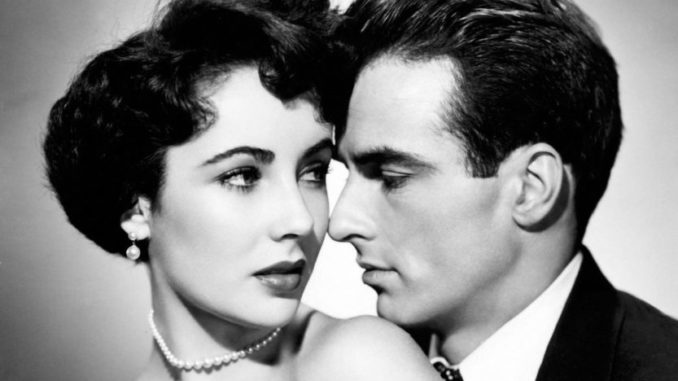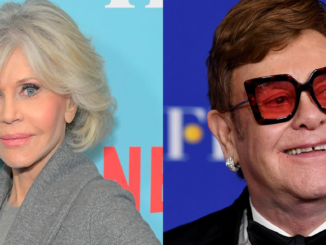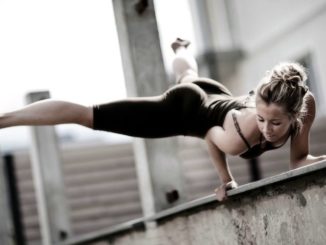
Well, does anyone of us ever come to think of Hollywood’s most memorable romance classics spanning decades? As an ardent admirer of romance and the alluring Hollywood musicals, I unmistakably feel my pulses rising with the sheer magic and aura of the timeless romances portrayed so very lovingly in the silver screen of the yesteryears. Be it the ever-touching saga of star-crossed lovers meeting during wartime under the Moorish arches of Rick’s Café American in “Casablanca”, or the sweeping melodrama, “Gone With The Wind”– based on Margaret Mitchell’s bestselling Civil War epic (which defined the term “Hollywood blockbuster”), I have an insatiable appetite for each of them.
Oh how can I ever forget the sweeping emotions of the magic of a shipboard romance which charms a Frenchman and American woman (Charles Boyer and Irene Dunne, respectively) into each other’s arms in the ever-memorable “Love Affair”? Or do you remember that phenomenal romance between Cary Grant and Deborah Kerr in “An Affair To Remember”, where a man and a woman meet on a ship crossing an ocean and fall in love, only to part ways, promising to meet dramatically on the top of Empire State Building, New York (which unfortunately, doesn’t happen later)? Equally unforgettable to my mind is the all-time epic love saga, “Roman Holiday”, which happens to be the most priceless transient romance between a disguised princess and a handsome American reporter (Audrey Hepburn and Gregory Peck, respectively).
When you come to think of candlelight romances, serenading, wooing the beloved or star-crossed epic love sagas, you would obviously mark the romantic chemistry between the lover and his beloved as the quintessential foundation behind these wonderful, witty and immensely touching tales of true love. Interestingly, the success of these blockbusters in romance in Hollywood comes from incorporating core elements of Hollywood (especially the music), classical romance elements and a degree of sentimentality which, again, is quite stylishly sophisticated in nature.
The 50’s and 60’s were the hey days of classic romance in Hollywood, when ethos, pathos, happy endings, heart-wrenching goodbyes and romantic love scenes along with power-packed performances by some of Hollywood’s heartthrobs like Gregory Peck, Audrey Hepburn, Ingrid Bergman, Cary Grant, Clark Gable, Vivien Leigh and Marilyn Monroe were the staple of every young heart. Now, I would rather not attempt this article as a primer of cinematic history comprising the best films of all times from the classic romance genre, for that is the job of an encyclopedia and not that of a human. And these days, you are sure to get plentiful of those online. So I would limit my writing to the discussion of only some of the milestones of our cinematic past, the era and the cultural milieu behind the production of these masterpieces, which again, comes from the sheer love I feel towards these movies.
While today, Warner Bros., Twentieth Century Fox, MGM and Columbia (Sony) are some of the pioneers in Hollywood film production and distribution, in the yesteryears, Paramount Pictures, the longest-lived American movie studio, used to lead the arena of American motion picture production and distribution. Those were the blissful times when the Hollywood studio system produced classic movies embodying a refined, evocative method of storytelling that left something to the audience’s imagination. While this was true right from the early nineteen hundred and thirties’ till the sixties’, the audience those days were fed on films which did adhere to certain standards of discretion and used established cinematic devices to imply what they could not say explicitly. Without an iota of blatant sensory stimulations, the sheer use of compelling stories and characters, snappy dialogue, high production values (including those of cinematography, editing, shot composition, scoring, sets and costuming) and above all, extra-ordinary acting prowess of the stars those days gave birth to some of the most celebrated reel romances of all times, including “Gone With the Wind”, “West Side Story”, “Casablanca”, “Roman Holiday”, “My Fair Lady” and “An Affair to Remember”.
The 40’s, 50’s and 60’s, combined, was also the era producing the greatest silver screen legends like Marlon Brando, Humphrey Bogart, Spencer Tracy, the irresistibly handsome Cary Grant and the super charismatic Gregory Peck, the celebrated smidgens Katharine Hepburn and Bette Davis, Ingrid Bergman, Sofia Lauren, Audrey Hepburn, and the ravishing Greta Garbo and Marilyn Monroe. Interestingly enough, did you know that recently the AFI has ranked the greatest love stories of the first century of American cinema, with “Casablanca” attaining the numero uno position? “Gone With The Wind” and “West Side Story” come only next to it among the greatest reel classics of America.
Truly worthy of their legendary status by virtue of their sprawling, epic film romance, few would venture to dispute the position of these three films as the silver screen’s greatest romances ever. And it is worth mentioning that in each of these films, there are potent screen moments between the protagonists that are replete with romantic content which again, unmistakably evolve into meaningful, personalized fantasies among the lovers of these reel romances. Whosoever has seen “Roman Holiday” will never for his/her life forget the phenomenal scene between Audrey Hepburn and Gregory Peck when Peck puts his hand into the “Mouth of Truth” (La Bocca della Verità), a stone face in Rome that according to legend, will bite your hand off if you tell a lie. In the film, when he pulls his hand out it is missing, causing Hepburn, the disguised princess Ann, to scream hysterically. The chemistry between the two in the scene is so infectious that the audience never fails to identify the film as a superior love story with the distinction of classic romance elements.
On the other hand, those were the times that produced the ever-memorable, ever-fascinating Hollywood musicals, like the legendary “Sound of Music” (1965), “Singing in the Rain” (1952). Regarded as two of the great movie musicals of all times, these are films that linger in the hearts of lovers of romance eternally. Who can forget the sweet, ethereal chanting of Julie Andrews in “The Sound of Music” where she teaches the seven children the notes of “Do re mi” or where she asserts her individuality singing, “I have confidence in me”, or where she playfully mingles with the children in the song “These are a few of my favorite things”?
For the records, the cast album was nominated for a Grammy Award for Album of the Year, while the film itself won an Academy Award for Best Picture and is one of the most popular musicals ever produced. “Singing in the Rain”, on the other hand, starring Gene Kelly, Donald O’Connor, and Debbie Reynolds, is replete with wit as a satirical comedy, featuring one of the most lavish elements of yesteryears’ musicals. It is the film where there’s the phenomenal dance scene of Gene Kelly with the title track, “singing in the rain”, while twirling an umbrella, splashing through puddles and getting soaked to the skin. “My Fair lady”, another classic romantic comedy woven in the mould of a musical, happens to be one of my personal favorites with electrifying performances by Audrey Hepburn as Eliza Doolittle, the young, uncouth Cockney girl and Rex Harrison as Henry Higgins, an arrogant, irritable professor of phonetics. Together, they put the screen on fire with an unforgettable film adaptation of the stage musical, My Fair Lady, based in turn on the play Pygmalion by George Bernard Shaw.
In the later years, to be more particular, from the nineteen hundred and seventies and eighties, there has been a noticeable transition of reel romance from the stylishly sophisticated, artsy and evocative style of the black and white years to the more bittersweet, flesh and blood world of the lovers, rocking with prolonged kissing and lovemaking scenes, unbridled energy and emotion. What can be a better example of the new cosmos in which the lovers find themselves other than that showed in “Love Story” (1970), one of the most romantic movies ever made? A romantic tearjerker from director Arthur Hiller about a passionate couple with a tragic ending, this one happens to be a heartfelt tale of the love of a lifetime. Regarded as the most successful Paramount movie up to that time, the film received seven Academy Award nominations including the Best Picture award. Another one, from the 90’s, “Forrest Gump” (1994), revives the same pristine emotions of love as the story revolves along some of the most enduring and touching moments of love between Forrest (Tom Hanks) and his lifelong love Jenny. While in the film, we have a sweeping look at thirty tumultuous years of American history seen through the eyes of the charmed simpleton Forrest, we are gifted with some classic scenes those have unparalleled intricacy and depth while still being enormously engaging. Again, in the 90’s, we see the enormously gripping passion and on-screen chemistry between Richard Gere and Julia Roberts in “Pretty Woman” (1990), a magnanimous love story about a wealthy businessman falling for effervescent hooker.
The chemistry between the lovers seemed to be so natural and convincing that it transcends the shackles of a romantic comedy and goes on to be remembered as quite a classic film in the romance genre. Towards the end of the 90’s, the world of romance in Hollywood was again ablaze with the blockbuster of all times, “Titanic” (1997), a fictional love story between Rose (Kate Winslett) and Jack (Leonardo De Caprio), members of different social classes who fall in love aboard the ill-fated 1912 maiden voyage of the ship Titanic. Even though the film is based on the historical sinking of the gigantic Titanic, the crux and the beauty of the entire film lies in the poignant tale of their love which is even more beautified by the soulful music and memorable soundtracks of the film. On a different note, though with the same poignancy and intensity of passion, unfolds the idyllic love story between Noah (Ryan Gosling) and his love Allie (Rachel McAdams) in “the Notebook” (2004). Adapted from the 1996 romantic novel by Nicolas Sparks, it has been one of the most touching screen romances of the present times.
Last but not the least; let me share with you my feelings of witnessing another classic film outside of Hollywood that portrayed romance on screen so evocatively yet with a poignant tone that I was immediately reminded of the classic undertones of creative suggestiveness and subtlety characteristic of the celebrated reel romances of Hollywood. The film is none other than the Italian masterpiece “La Vita E Belle” (“Life is Beautiful”) directed by Roberto Benigni which went on to win 3 Oscars in 1998. While the film was based on the story of the violent indignities suffered by Jews in the concentration camps of World War II, the subtleties of the film transcend the horrors of the concentration camp with some of the most beautifully screened romantic sequences in world cinema.
Remember the scene where Guido follows his bride Dora into a greenhouse and the scenes which follow thereafter? Well, rather than showing what they do there, the scene slowly dissolves to a shot of the same greenhouse, only this time, a little boy is playing there. The implications are obvious, the device serves to advance the plot a few years without restoring to the clichéd “five years later…” inter-title and the love scene is left to the audience’s imagination. By virtue of the amazing screenplay, the film turns out to be an unforgettable fable that proves the indomitable spirit of love, family and imagination in the face of all evils. Undoubtedly, this, along with the joys of love, and life–has been the most enduring theory working as the ultimate foundation behind all successful romance classics in the history of Hollywood! And so, be it in “Casablanca” or in “The Notebook”, both ‘cupid’ and ‘life’ rule! For, all quintessential romances are a celebration of life in its varied hues. Struck by cupid’s arrows, it becomes ever more beautiful and transcendental by all means!
Proudly WWW.PONIREVO.COM



